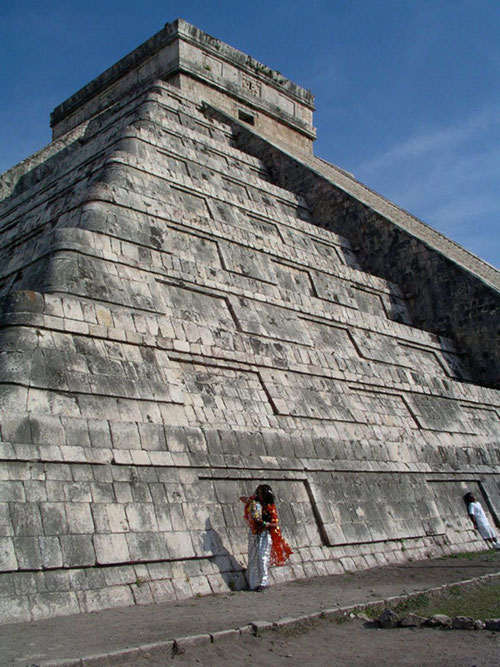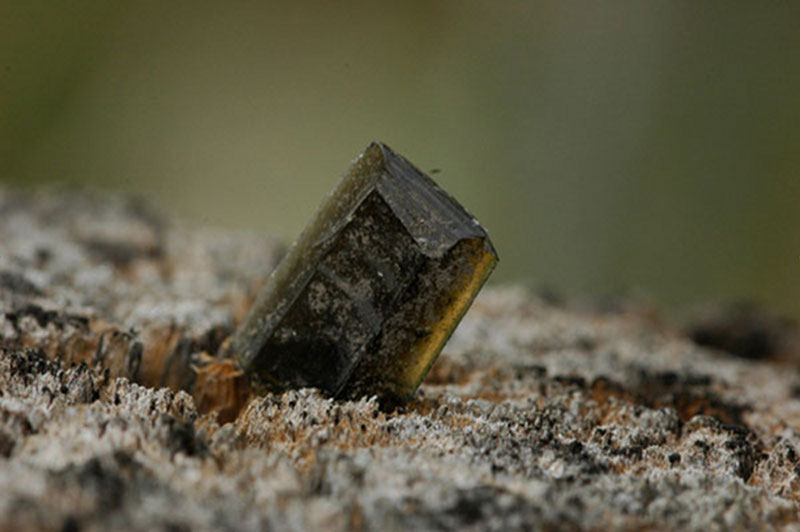
By Dominique Rissolo, Executive Director - Waitt Institute

A picture taken of the Castillo at Chichén Itzá. This is one of the most well-known buildings in Mesoamerica. It is a radial pyramid (with a set of stairs on each side) and is positioned in the middle of the massive plaza area that would have held large numbers visitors to the site at the height of Chichén’s power much as it still does today during the Equinox and Solstice. Image courtesy of Proyecto Costa Escondida Maritime Maya 2011 Expedition, NOAA-OER. Download larger version (jpg, 490 KB).
Maya civilization was among the greatest of the ancient New World. Their culture endured across the span of Mesoamerican history – witnessing the rise and fall of Teotihuacan and surviving the spread of the later Aztec Empires.
The Maya, emerging as early as the 9th century BC, never constituted an empire themselves. Rather, the Maya area – encompassing southeastern Mexico, all of Guatemala and Belize, and portions of Honduras and El Salvador – can be best characterized as a diverse political, social, and economic landscape once dominated by semi-independent polities. Divine kings ruled over civic-ceremonial centers and their peripheries, like those of famous Tikal and Copan, as well as presided over the complex shifting alliances that engaged and divided the world around them.
What provided cohesion for this constantly reconfigured mosaic? Maya peoples, across time and space, were essentially bound together by a pervasive and persistent shared ideology and a unique set of cultural traditions. Their ingenuity and contributions to human knowledge are legendary, and include true writing, place value-numeration, mathematics, astronomy, and calendrics. Many of these developments matured and flourished during the Classic Period.
The "collapse" of the Classic Period Maya of the southern lowlands is fixed in the popular imagination as the end of Maya civilization, but nothing could be further from truth. At the beginning of the 10th century AD, the majestic cities of Yucatan, to the north, rose to power and ushered in a new Maya era. This was a time of great internationalization across Mesoamerica – a development related to the rise of maritime commerce and interaction.

An obsidian blade fragment from the Pachuca source in the modern state of Hidalgo, Mexico. The obsidian from this source has a greenish hue, a symbolically significant color for Mesoamerican peoples. Image courtesy of Proyecto Costa Escondida Maritime Maya 2011 Expedition, NOAA-OER. Download larger version (jpg, 2.3 MB).
Who were these ancient Maya seafarers? It is believed that long-distance coastal trade was initially dominated by the so-called Putun Maya of the Gulf lowlands. Archaeologist J. Eric. S. Thompson once referred to these shrewd and intrepid merchants as “the Phoenicians of the New World.” Throughout the Terminal and Postclassic Maya periods, precious goods and commodities – including jade, pottery, cotton, obsidian, cacao, and salt – made their way along a coastline stretching from modern Veracruz to Honduras. The vessel of choice was the dugout canoe. These were not humble watercraft, but massive affairs. On Columbus’ fourth voyage, in 1502, his son describes a canoe measuring 8 ft wide and 50 ft long, propelled by 25 paddlers and carrying both passengers and cargo.
Although the later part of Maya civilization was supported by maritime trade, not a single preserved sea-going canoe has been found. Postclassic Maya iconography provides hints as to what these vessels may have looked like, but perhaps one lies undisturbed beneath the mud of some ancient harbor, waiting to be discovered. For the archaeologist, the maritime Maya also left behind coastal ports centers, rich with exotic goods from across Mesoamerica. It is here, at places like Vista Alegre, that the stories of these great traders will be told.